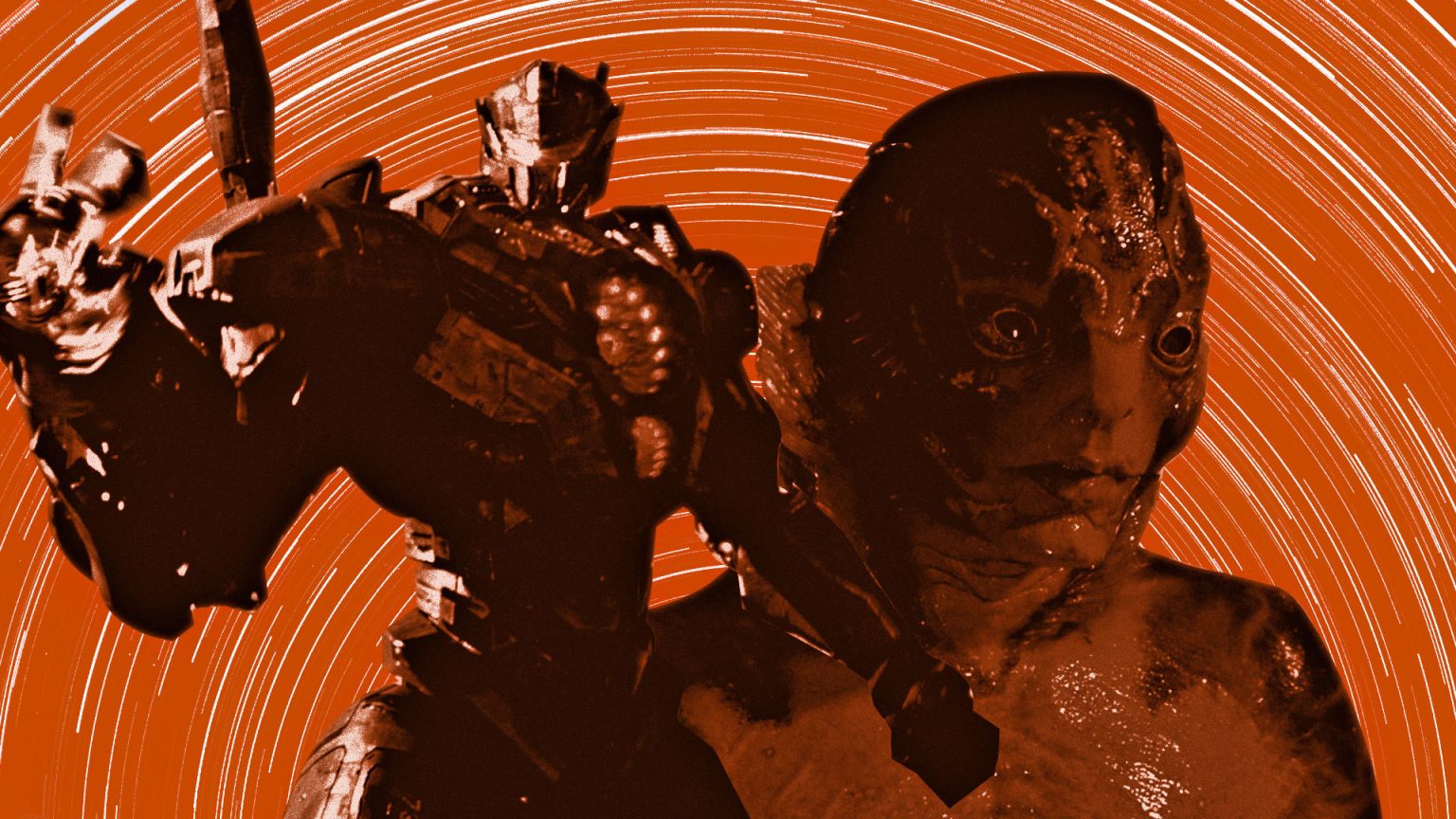Just in case you’ve been living under a rock lately, director Guillermo del Toro is on a bit of a roll. He’s coming off a pair of Oscar wins (for Best Picture and Best Director) for his latest film, The Shape of Water, and Pacific Rim: Uprising, the sequel to his 2013 film, and for which del Toro is credited as a producer, just unseated the indomitable Black Panther at the box office (and is apparently crushing the Chinese markets). But for a director who seems to sit on top of the filmmaking world, the outlook wasn’t always as clear.
There were a lot of memorable moments at this year’s Oscar ceremony, but one that sticks out is del Toro describing his pitch for The Shape of Water to the executives at Fox Searchlight. It stuck out because of how emotional the director was talking about that meeting and what it meant to him that, after such a strange pitch, the studio gave him a chance to make the movie. And if we look back at where del Toro was in his career around a decade ago, it’s not hard to understand why he was overcome with emotion in retelling the story.
From The Devil’s Backbone in 2001 to Hellboy II: The Golden Army in 2008, del Toro made a movie roughly every two years. It was an extremely productive and successful time for the director, with genre hits like the Hellboy franchise and Blade II, as well as the incandescent Pan’s Labyrinth, being made during this period, and it was on the wave of these successes that del Toro decided to tackle filming H.P. Lovecraft’s horror classic, At the Mountains of Madness. With a projected budget of 150 million dollars, Tom Cruise and James Cameron attached as producers, and ILM in line to do the special effects, it would be the director’s biggest project to date. Everything seemed in place, and then, at the last moment, the studio balked and the project was scuttled.
It would be five years before del Toro, who had essentially worked constantly for the first decade of the millennium, sat in the director’s chair again. And then in 2013, he dropped Pacific Rim, an action sci-fi romp about giant robots fighting alien monsters. It pulled inspiration from manga and anime, Godzilla, and—this writer guesses — deep cuts from the library of movie and comic book classics that lives in del Toro’s head. For fans, Pacific Rim was a celebration of the summer blockbuster — a no-holds-barred rollercoaster of special effects, action, and classic lines like “Today, we are canceling the apocalypse!” But for del Toro, the movie meant more.
You could make the argument that every movie is personal for a director who solely focuses on passion projects, but after the false start of At the Mountains of Madness, it was the first project he endeavored to embark on, and his first time climbing back into the director’s chair and shouting “ACTION!” in the loud, commanding way the director has become known for onset.
In the book, Pacific Rim: Man, Machines & Monsters — The Inner Workings of an Epic Film, writer David S. Cohen describes del Toro’s experience at that year’s Comic-Con in San Diego, where the first teaser trailer for Pacific Rim was shown. After the lights went up at the clip’s end, the crowd burst into cheers and applause, and Del Toro described the moment as a “completely life-affirming experience. I was very moved by the chitter-chatter, the hush, the whispers…that’s what affected me in a beautiful way.”
Pacific Rim was a success, both from a critical and a financial standpoint. But more than that, it marked the return of a director that, this year, was honored for the beauty and uniqueness of his vision with one of the most prestigious awards possible. It begs the question: What if Pacific Rim had been a failure? If that audience at Comic-Con had fallen silent after that first trailer for Pacific Rim, or if the delightful madness of the movie hadn’t managed to capture the hearts of so many people looking for the kind of escapism that only a “big” movie can offer, how would the studio have received the pitch for a romantic drama about a woman who doesn’t speak but falls in love with an aquatic monster?
It might be worth re-thinking how we perceive the Pacific Rim franchise. Yes, we should still appreciate the movies for their bon-bon popping goodness, but we should also think of them as touchstones in modern Hollywood history — because, without them, it’s very possible that we wouldn’t have The Shape of Water. People have even started to whisper that the arrested development of At the Mountains of Madness might finally have new life! And now, if that movie is eventually made, and if it is the success that we all know del Toro can make it, you’ll also know that it, too, might not have been possible without Pacific Rim.




